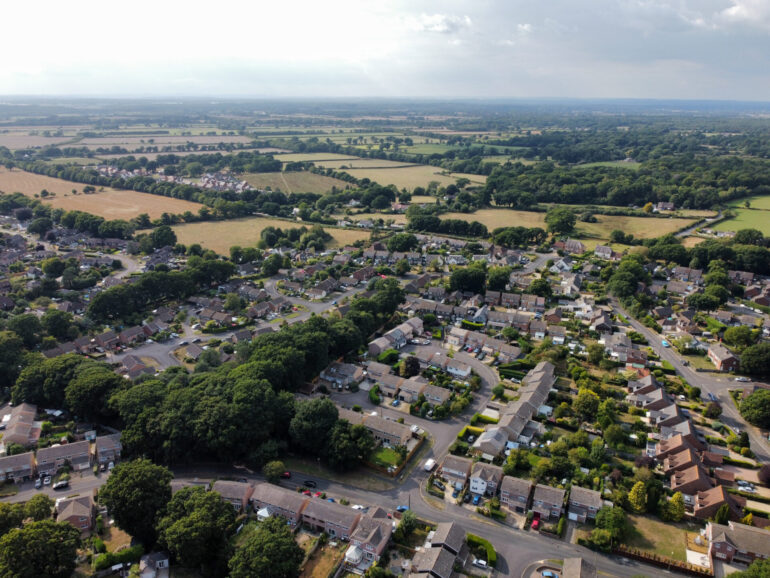71% of private renters in the lowest two income quintiles spent more than 30% of their gross household income on rent, according to the latest English Housing Survey (EHS) data.
More social renters were in the lowest income quintile compared to private renters, but private renters in the lowest income groups were more likely to spend a higher share of income on rent than social renters or mortgagors.
In London, 96% of private renters in the lowest two income quintiles spent more than 30% of income on rent, compared to 65% outside the capital.
Private renters in London were also more likely to be in the highest income quintile (26%) than those in the rest of England (10%).
Fewer households reported arrears and more had savings over the past decade.
In 2023-24, 95% of private rented households and 85% of social rented households said they had not been in arrears in the last year, both up on previous years.
In 2023-24, 52% of private renters had savings, compared to 33% in 2013-14.
For social renters, 28% had savings, up from 16% a decade ago.
Most private and social renters said it was easy to pay rent, but this has changed over time.
In 2023-24, 68% of private renters and 72% of social renters found it easy to pay rent.
For private renters, this was a fall from 73% in 2019-20.
The proportion for social renters stayed steady from 2019-20 but was higher than in 2013-14, when 59% found it easy to pay rent.
Owner occupiers stayed in their homes for longer than private and social renters.
Around 20% of private renters had lived in their current home for less than a year, compared to 6% of social renters and 4% of owner occupiers.
Owner occupiers mainly considered moving for a larger house or to buy a home (both 21%).
Private renters moved mainly for a better area (14%), a larger house (12%), or job reasons (12%).
Social renters’ main reasons were that their previous accommodation was unsuitable (17%) or for family and personal reasons (16%).
Social renters were more likely to have experienced homelessness than private renters.
Around 8% of social renters had been homeless in recent years, compared to 4% of private renters and less than 1% of owner occupiers.
Of those who had been homeless, lone men (29%), lone parents with dependent children (23%), and lone women (18%) were the most common household types.
Nearly two-fifths (39%) of private renters (1.8m households) paid rent in advance as well as a deposit. Most (79%) paid one month or less in advance.
Most households across all tenures were satisfied with their local area.
EHS data showed that more than half (57%) felt very satisfied, while just 2% felt very dissatisfied.
Owner occupiers were most likely to be very satisfied (60%), compared to 52% of private renters and 48% of social renters.
Rented households in urban areas with over 10,000 people were less likely to be very satisfied with their local area.
Around 46% of social rented households and 51% of private rented households in these urban areas said they were very satisfied.
Social and private renter household reference persons were more likely to feel unsafe when home alone than owner occupiers.
In 2023-24, 8% of social renters and 5% of private renters said they felt unsafe, compared to 2% of owner occupiers.
Single female households were the most likely to feel unsafe (6%).
Households in the most deprived 20% of areas were most affected by rubbish (59%), vandalism (37%), and crime (56%).
In the least deprived areas, these figures were lower at 24%, 19%, and 26%.
Sarah Coles, head of personal finance at Hargreaves Lansdown, said: “The eye-watering cost of rent is devouring huge chunks of people’s income, making it incredibly difficult to build a deposit – it’s no wonder millions of people risk being stuck in the rental trap.
“Private renters spend more on their housing costs than any other group, and because they tend to be on lower average incomes, it takes a punishingly large proportion of their cash each month.
“Younger renters face a mountain to climb paying the rent each month – and on average, private renters aged 16 to 24 spent half (50%) their income on rent.”
Coles added: “Tenants in London are struggling too – spending an average of 46% of their income on rent.
“They struggle to put money aside for any reason – only 52% have any savings at all – so building a deposit is a real stretch. In fact, separate figures from the HL Savings and Resilience Barometer shows that on average they’re only able to put away 2.7% of their income for the future.
“It means that those who are able to free up some money to save for a deposit need to ensure it’s working as hard as possible for them.”
She said: “If they qualify for the Lifetime ISA, it’s well worth considering. If you’re aged 18-39 you can open an account and pay in up to £4,000 a year.
“The government will top this up by 25% – or up to £1,000 – which is a decent boost for your deposit.
“The money has to be used for a first property (worth up to £450,000) or for retirement, but if you qualify it can help those who need it most to take their first step on the property ladder for those who need it most.”
Helen Morrissey, head of retirement analysis at Hargreaves Lansdown, said: “Our retirement reality is shifting – while many of us dream of having paid off our mortgage by the time we collect our pension, the fact is that increasing numbers of us haven’t.
“This means we need to factor mortgage payments and rent into our figures, and this data shows it takes a fair chunk out of pensioner incomes.
“Retired households paid 18% of their income on mortgage costs and a whopping 38% for renters.
“It’s an issue that isn’t spoken about often enough and it has a major impact on how much people need to save.”
Morrissey added: “The latest data from HL’s Savings and Resilience Barometer shows that just 15% of renters are on track for a moderate retirement income.
“This compares to 47% of homeowners. Given people will increasingly bring housing costs into their retirement years, it will be interesting to see the role they play in the upcoming government review into pension adequacy.
“The challenge is that with rents going up, people find it harder to save for their own home and this in turn frees up less money to put away for retirement.”
She said: “Retirement may feel a long way away, but it’s important to think about what you want that time to look like, so you can get an idea of what it might cost.
“Checking in with how your pension is doing and using tools like pension calculators to get a sense of what you might end up with is really useful.
“If you are on track with your plans then great, but if not, you have time to put a plan in place to do something about it.”
She added: Making small changes, like increasing your pension contribution when you get a pay rise, can really make a difference over time if you can afford it.
“If you are aged 18-39, you can also look at a Lifetime ISA which can help you save for both a mortgage and retirement.”



